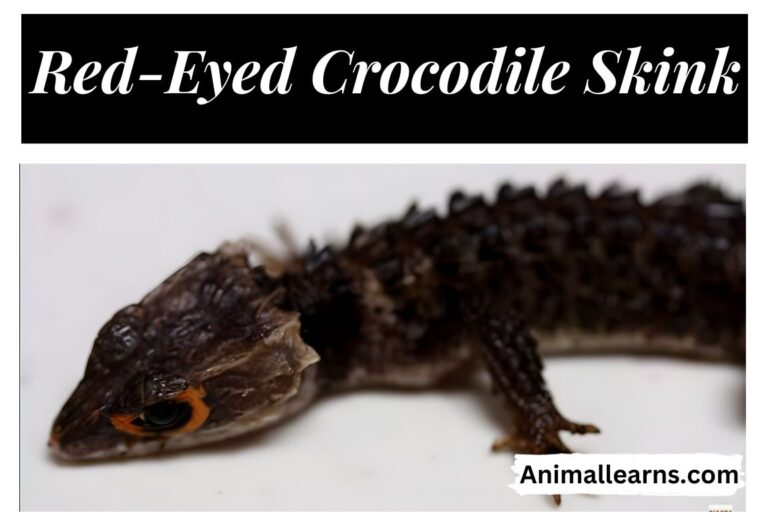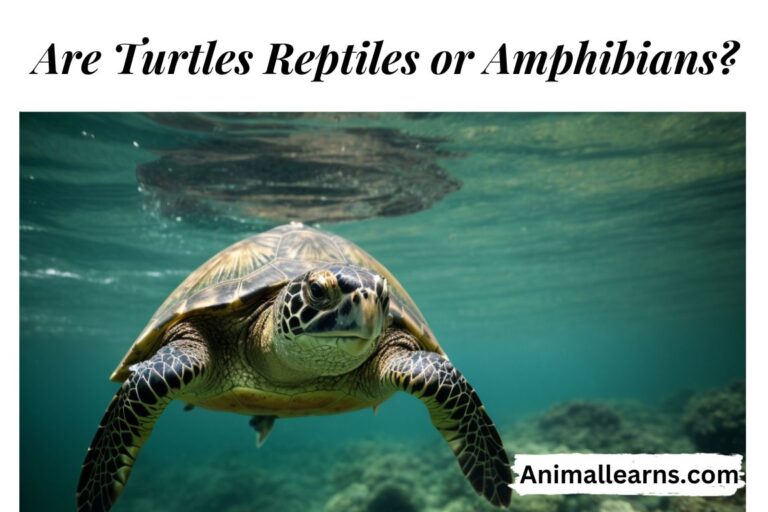Blue Eyed Leucistic Ball Python: BEL Morph Care Sheet
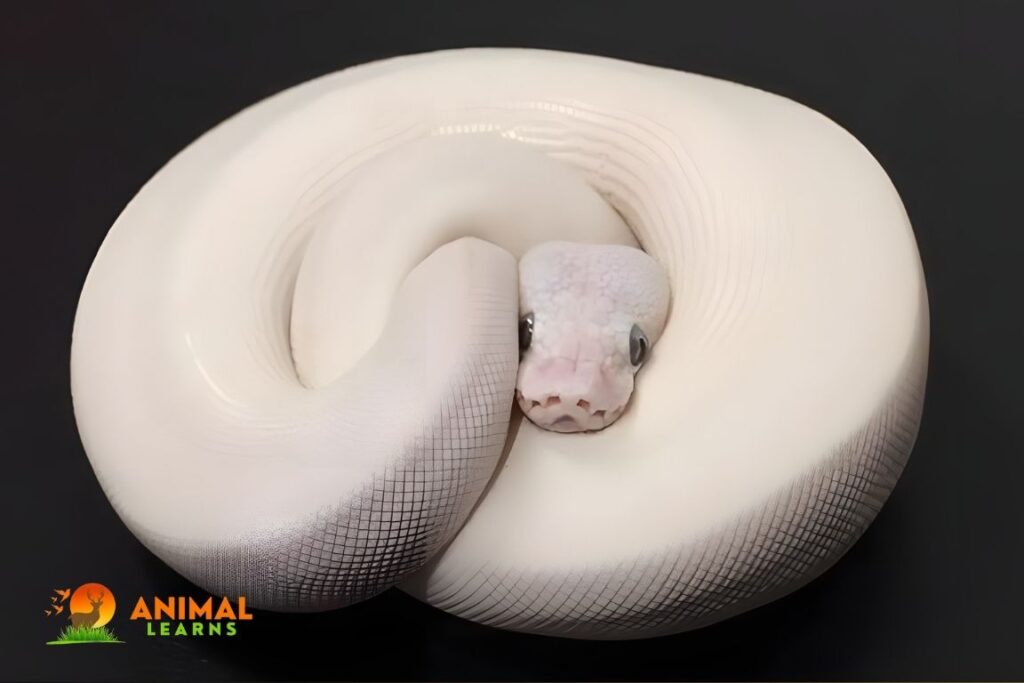
For snake lovers looking for an intriguing addition to their collection, the Blue Eyed Leucistic Ball Python is a highly sought-after species.
Its remarkable features, which include brilliant blue eyes and flawless white coloring, make it one of the rarest and most sought-after morph variants in the ball python community. Beyond only its attractive appearance, keepers choose the BEL ball python because of how easy and docile it is to care for.
Even though it’s one of the rarest morphs, it has no health concerns and requires the same maintenance as regular ball pythons. This sets it apart from many other morphs that could have problems.
The snake’s distinctive features include its beige spine stripe and the ice-blue irises that encircle its black pupils. This morph is a great option for herpetologists looking for a unique and simple-to-manage reptile because it not only adapts well to captivity but also tolerates handling.
The blue-eyed Lucy is definitely a fantastic option if you’re thinking of adding a unique and unusual snake to your collection. It has a pleasant disposition in addition to its attractive appearance.
To learn everything there is to know about your blue-eyed friend, continue reading.
Appearance Of Blue Eyed Lucy
Contents
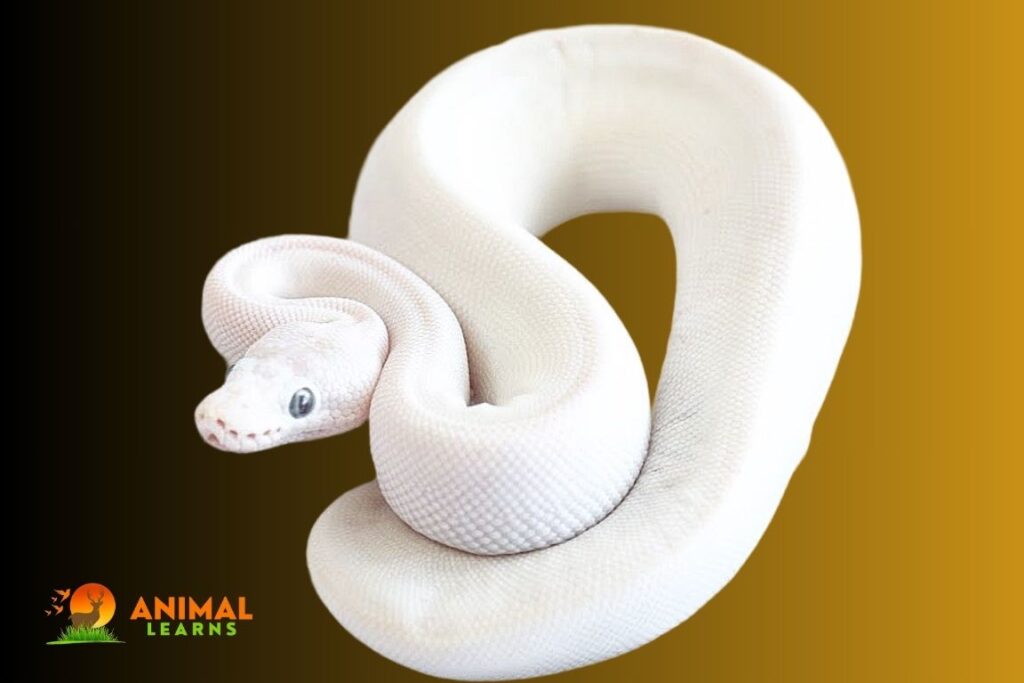
One of the most sought-after morphs of the ball python is also referred to as a blue-eyed Lucy or BEL. This snake is all white, as its name implies, with ice-blue eyes and black pupils.
It is mostly valued for its white coloration, yet it may have a brown stripe running along its spine. Were You Aware? Albinism and leucism are not the same. Leucistic morphs only have a partial loss of pigmentation, whereas albino morphs lack both melanin and pigmentation.
These variants have smaller males and larger females, and they usually reach lengths of 3 to 5 feet. While females often reach five feet, males typically only reach three feet. Though it is less typical, captive females have grown as tall as six feet in certain situations.
Leucistic morphs with blue eyes have stocky bodies and smaller heads, which is a characteristic morphology of pythons. A guy in good health should weigh about three pounds. A healthy girl should weigh about 4 pounds.
Behavior & Temperament
Popular pets, ball pythons are frequently the first option for novice reptile keepers. Being among the most gentle snakes, ball pythons have a well-earned reputation.
With consistent handling sessions and socialization, holding your blue-eyed Lucy will come naturally to her. To handle them, place your hand beneath the widest part of their body, which is usually the first third or the area close to the middle.
While you’re raising them, be sure to support their body. Make sure they are aware of your presence while moving gently. Avoid jerking or making abrupt motions to remove them from the tank.
Holding them, keep your grasp relaxed but tight. Let them wander about freely, and gently reroute them as needed. There are moments, nevertheless, when you should not handle your Python.
This covers the period of 24 hours following their relocation, both before and after feeding them, and throughout their shedding cycle.
They have an amazing temperament, yet they are also among the shyest snakes. They do poorly in hectic and loud settings. The best times to see ball pythons are around dawn and dusk. Even then, they proceed deliberately and slowly.
However, it’s a dead giveaway that your BEL is anxious if you find them hiding all the time and only coming out when absolutely necessary.
Their hallmark protective maneuver, balling themselves into a tight ball, is another indication of stress. If you see this, you should get rid of the more pressing stressor right away.
Lifespan
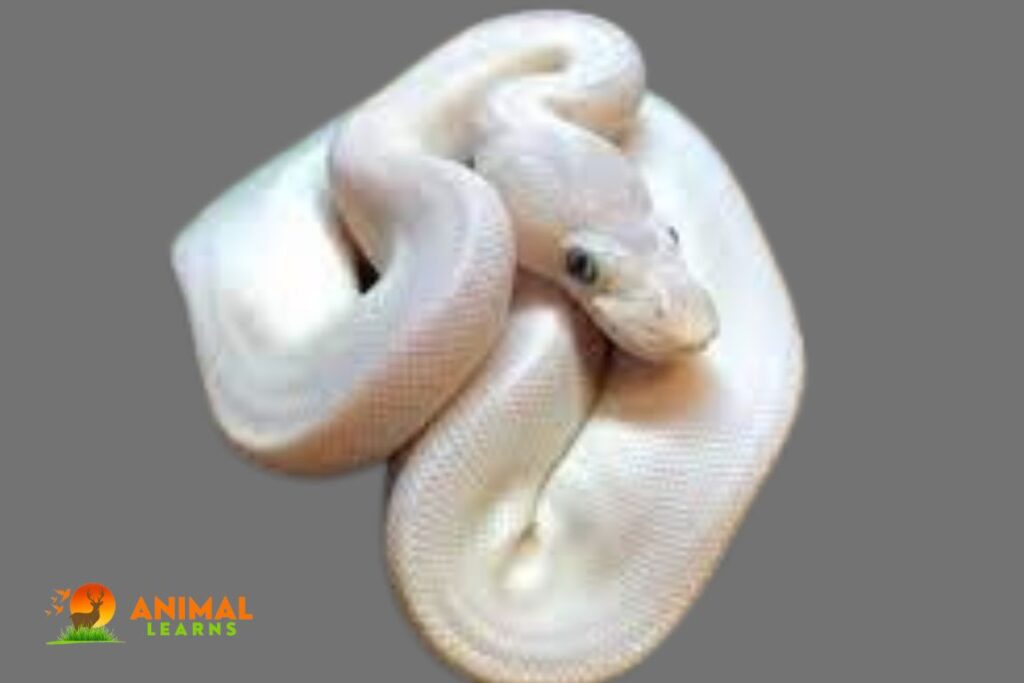
A ball python’s lifespan is typically 20 to 30 years. You should only purchase or adopt a BEL if you are ready to provide for them for at least the ensuing ten years, as they require a lot of care.
Did You Recognize? 47 years is the oldest ball python ever kept in captivity!
Price & Availability
Since ball pythons are among the most maintained reptiles, most morphs are usually simple to locate. But due to their pigmentation, which takes generational breeding to achieve, BELs are even rarer.
This implies that you must breed the offspring of a coupling of two pythons, such as a Mojave and Phantom, rather than just the two themselves.
This makes this designer morph more costly and rare. The price range for blue-eyed leucistic ball pythons varies from $500 to $1,000, contingent on the breeder, lineage, and any health warranties that are offered.
Blue-Eyed Leucistic Ball Python Habitat & Tank Setup
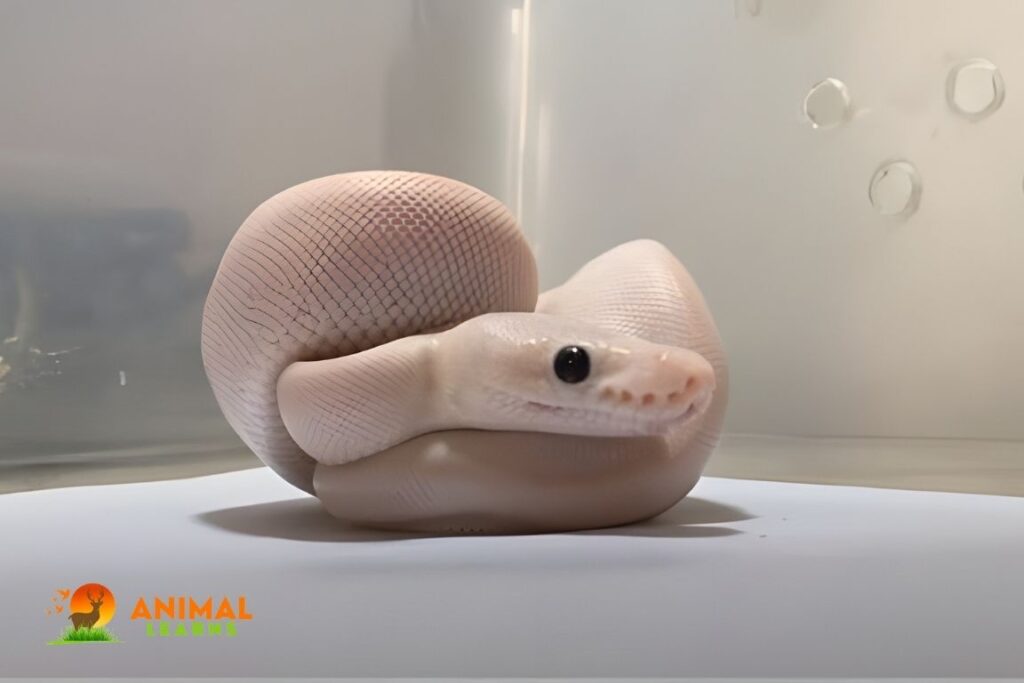
Even though your snake will live its whole life inside its container, it should periodically venture outside of it for exploration! Encouraging your snake to investigate novel surfaces like grass or carpet will offer beneficial enrichment. Just make sure you’re available to oversee at all times.
Your Leucistic Blue-Eyed Ball The majority of Python’s existence will be spent within its cage. It needs a house that is suitable in terms of temperature, humidity, and seclusion in order to be healthy and happy.
Even though we’ll outline the fundamental needs for a healthy ball python, consider if owning a snake is really about doing the bare minimum or something more.
Size of the Enclosure
Ball pythons don’t require very large cages considering their size. Hatchlings and juveniles under 20 inches really thrive in tanks that hold 15 to 20 gallons.
In the meanwhile, 40-gallon tanks are a better fit for juveniles and adults under three feet.
Adult Minimum Enclosure Dimensions: 48″ Long x 24″ Wide x 12” High; 120-gallon tank.
Generally speaking, you want an enclosure that is at least half as broad and at least as long as your ball python. As they are terrestrial animals, ball python enclosure height is not important. This species is typically kept in shallow baths because of this.
Nevertheless, your Blue-Eyed Leucistic Ball Python will surely take advantage of the tall cage if you can afford to provide it with branches, pebbles, and other climbing chances!
The same, if not more so, applies to more floor area.
Type of Enclosures
PVC or wood enclosures work well.
Three solid sides, a solid bottom, and a solid top characterize PVC enclosures. This makes a significant contribution to maintaining the high humidity and temperatures needed for Blue-Eyed Leucistic Ball Pythons.
Instead of entering from above, which may give the impression that you are a predator, the front-opening entrance lets you reach in at the same level as your snake.
All things considered, these kinds of enclosures provide your snake with a sense of security, which is important for this timid species that frequently becomes frightened and stops feeding.
Better is the plastic tub.
Shallow tubs on a rack arrangement are a common way for keepers of many snakes to conserve space. In racks, a large number of ball pythons reproduce, eat, and lead long, healthy lives.
If space is not a concern, standalone baths also provide reasonably priced habitat. By choosing this option, you may provide your Blue-Eyed Leucistic Ball Python with a taller tub as opposed to a small one, giving it more room to climb and explore.
The majority of tubs are constructed of opaque plastic, which might make your ball python feel more secure but makes it impossible to see inside without taking off the enclosure cover.
Okay: Glass or acrylic aquarium
The most popular aquarium materials for owners of pet snakes are glass and acrylic, however, these materials aren’t always the best for housing Blue-Eyed Leucistic Ball Pythons.
Heat is not retained by glass or acrylic, and moisture swiftly escapes through the top or screen cover.
Nevertheless, you may view your pet in these stylish display cages, which are widely available at pet retailers.
They’ll probably need water-proof shielding for ¾ of the screen top AND more powerful heating components than a similar-sized plastic enclosure.
Even so, they may create quite entertaining ball python cages with those changes.
Ideal Temperature Gradient
Cold-blooded reptiles use thermoregulation, or switching to a warmer or colder environment, to regulate their body temperature based on the biological function they’re trying to support.
For instance, all reptiles require warmth to aid in food digestion, and gravid females require it to prepare fertilized eggs for depositing.
However, snakes usually opt to cool themselves during periods of shedding, food shortage, sickness, or male sperm development.
Our slithery buddies require a temperature gradient in their habitat, with a chilly side and a warm side, to support their natural activity and overall health.
- 84–89°F on the warm side
- Surface for Basking: 9o–94°F
- 75–80°F on the cool side
- Temperature Drop at Night (Optional): 72–78°F
Ideal Humidity Levels
55–60% humidity is ideal.
If the humidity is already high, think about increasing it even more for tiny hatchlings and blue or shed snakes.
Substrate
Sheet paper, cypress mulch, soil, and coconut fiber
Although some species may burrow if given the opportunity, ball pythons are not known for this activity, thus the substrate need not support it.
Humidity retention is the most important factor to consider when selecting a substrate for Blue-Eyed Leucistic Ball Pythons.
Homemade soil combinations that include organic topsoil, peat moss, and washed play sand work well to keep your ball python happy and let it burrow if desired. Still, unless you set up a bio-active setup, it might make spot cleaning challenging.
The hue of your blue-eyed Lucy will definitely pop on this kind of bedding! Although cypress mulch is likewise black and looks great against the white scales of your ball python, it prevents them from digging.
Although it might be among the priciest beddings for reptiles, spot-cleaning it after your pet urinates on it is not too difficult. Meanwhile, the texture, look, burrowability, and cleanability of coconut fiber, or coir, are very comparable to those of soil.
Like a newspaper, paper towels, and butcher block paper, sheet paper is extremely inexpensive—or even free—and makes it simple to see things like mites or fecal anomalies.
It’s not a particularly aesthetically beautiful or enriching option for your pet, though. In addition, it tends to draw moisture out of the air, lowering humidity. When you try to raise the humidity, aspen shavings dry out the air and encourage the growth of mold.
Shavings made of pine, cedar, and other softwoods are said to be poisonous to tiny animals. Bedding made of recycled paper is dry and dusty, which encourages respiratory illnesses. Reptile carpet is expensive, often discolored, and requires a lot of upkeep.
Decor and Accessories
When an area is congested and there is no need for them to reveal themselves in order to go to a basking location, water dish, or even for exploration, snakes feel the safest.
Your choices and financial constraints will determine how you choose to design the enclosure for your Blue Eyed Leucistic Ball Python. Filling the environment with fake plants, branches, vines, logs, and cork bark is the usual method.
Budget-conscious keepers have been getting inventive using cardboard boxes, PVC pipes, cardboard tubes, and crumpled paper sheets.
Either choice will provide your Blue-Eyed Leucistic Ball Python all the hiding places and cover he needs to feel secure!
The Blue-Eyed Leucistic Ball Python needs at least two hides—one on the cold side of the enclosure and one on the warm side—in addition to habitat enrichment and décor.
Your snake will feel more exposed if the hide is open on both ends, as in a tube or half-log.
Leucistic Ball with Blue Eyes Pythons finds security in confined spaces where they can feel surfaces contacting most of their body, such as their sides, back, and belly.
Blue Eyed Leucistic Ball Python Care Sheet
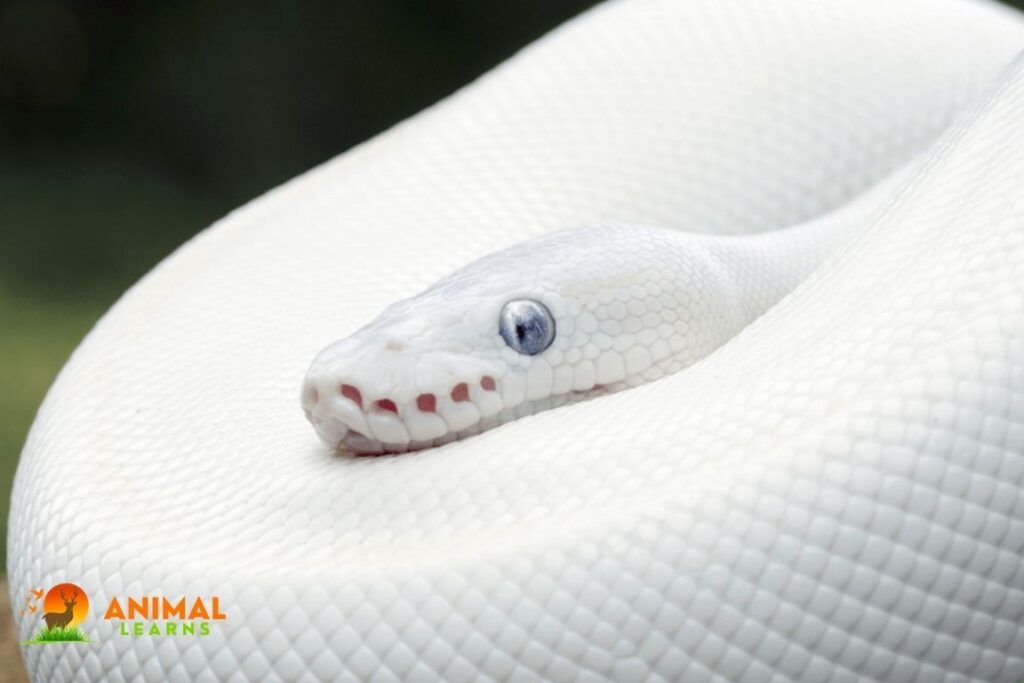
Ball Python Diet
Ball pythons are predators that feed on tiny rodents and birds in the wild.
The Leucistic Ball with Blue Eyes The food of a python is pretty straightforward: rats should be fed to adults, and pinky or fuzzy mice should be offered to hatchlings.
You should know when and how much to feed your snake in addition to what to feed them. As your snake gets older, this changes:
Eating pinky or fuzzy mice every five to seven days is recommended for hatchlings. Every seven to ten days, young animals (six months to three years old) should be given rats that are no bigger than the largest portion of their bodies. Every 10 days, adults should be given medium-sized rats.
For hatchlings, pinky or fuzzy mice are the right size food items. However, as soon as they grow into juveniles, you should assist their transfer to rats since they are richer in fat and let you give an adult a meal that is better as a single item.
It is strongly advised that you feed just partially thawed frozen food. Live prey can bite or scrape your snake, leading to illnesses or long-term eye damage.
To defrost rodents, you have to:
The night before feeding time, put the rodent in the refrigerator. The mouse should be placed in a bag and left in warm water the next morning. At 97 to 100°F, it’s safe to eat. A snake is excited by different types of prey, which enriches them.
Maintaining a water basin big enough for your snake to soak in is crucial, too. It will support their hydration and help them shed. To stop mildew growth, it should be washed once every two days.
Blue-Eyed Leucistic Ball Python General Health Information
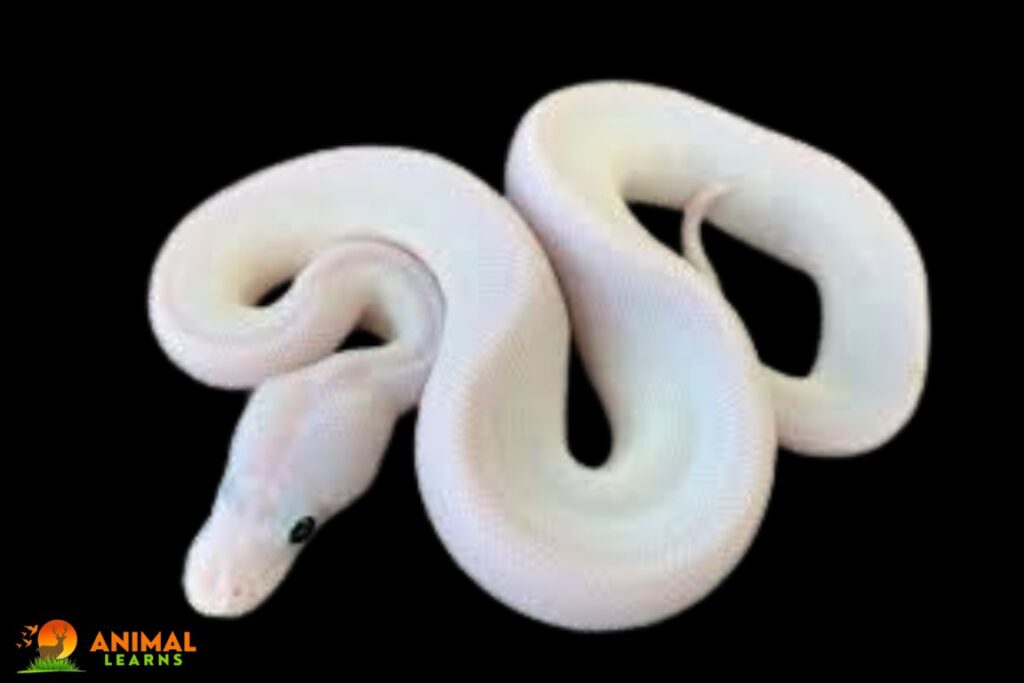
Healthy 30-year+ Lifespan of a Captive Ball Python
Indicators of a Blue-Eyed Leucistic Ball Python in good health include:
- Clear, bright blue eyes, unless the animal is shedding
- rounded edges
- evenly white, with no questionable coloring around the mouth or belly (the back may have beige streaks).
- Breathing clearly without drooling, wheezing, or clicking
- The body form of a rounded triangle
In general, snakes—including ball pythons—tend to be in quite good condition, particularly if you don’t touch or purchase new snakes frequently, or if you don’t possess many other snakes.
Nonetheless, there are a few typical problems that owners may ultimately run across.
Snake Mites
Symptoms: Signs include black spots on your snake, habits such as soaking in a water dish, and infrequent or partial shedding.
Treatment: Treatment options include DIY snake mite treatment at home or over-the-counter pesticides designed for reptile mites.
Mouth Rot
Symptoms: loss of appetite, oral sores, and pustulous discharge from the nose and mouth.
Treatment: Veterinarian-prescribed medicines, manual mouth washing with iodine or chlorhexidine, and surgery in extreme situations.
Scale Rot
Symptoms: Symptoms include blisters, soft, bulging scales, dropping scales, foul-smelling sores, and red or brown lesions on the abdomen.
Treatment: Veterinarian-prescribed medications, regular enclosure disinfection, soaking in iodine or chlorhexidine, and surgery in extreme situations.
Respiratory Infections
Symptoms: include mucus production from the mouth or nose, breathing sounds such as clicking or wheezing, breathing with the mouth open, pointing the head upward, and remaining on the cooler side of the cage.
Treatment: injectable antibiotics administered by veterinarians
Internal Parasites
Symptoms: Symptoms of internal parasites include diarrhea, discolored stools, anorexia, and underweightness even with adequate food intake.
Treatment: Antiparasitic drugs, either over-the-counter or recommended by a veterinarian
IBD (Inclusion Body Disease)
Symptoms: Symptoms of inclusion body disease (IBD) include anorexia, loss of coordination, swaying, stargazing, and corkscrewing.
Treatment: Euthanasia for fatal diseases
Breeding
A blue-eyed leucistic python should only be kept in a home with another ball python in order to reproduce. If not, these snakes need to be kept by themselves at all times.
Breeding the progeny of two of the following four morphs—Mojaves, Lessers, Butters, and Het Russos—is required to produce a BEL. There is a 25% probability that every egg laid from any of these batches will be a blue-eyed Lucy.
The breeds with the finest track records for producing pure white BELs are usually Lesser Platinum and Super Butters. You can mate your blue-eyed Lucy with another BEL or any of the four morphs mentioned above if you already have one. You must boost feeding throughout the warm months and decrease handling sessions to prepare your female for breeding.
Keep a watchful eye out for any symptoms of tension in your female while introducing a male. Remove the man and wait 48 hours before attempting again if she isn’t at ease.
You should be able to keep them together for around three days. When the male cocks his tail along with your female, you will know they are breeding.
Do Ball Pythons Like Being Handled?

This snake is excellent for novices because of its amiable disposition and tolerance for handling.
Your Blue Eyed Leucistic Ball Python will require a few days to acclimate when you bring them home. For the first two weeks, limit contact to prevent overstressing your snake.
To stop the transmission of illnesses like salmonella, wash your hands properly both before and after handling any reptile.
For a few weeks, begin handling your snake for 10 minutes at a time. Only then, if your snake is comfortable with it, can you extend the time.
Here are some pointers to help you learn your new Blue Eyed Leucistic Ball Python:
- Rub your fingers gently over your snake’s back.
- Keep an eye out for indications of anxiety or tension, such as jerking its head or attempting to curl up.
- Grab the snake by its wide part of the body.
- As you take up the snake, support the remaining weight of the animal.
This species may bite, just like any other snake. They are calm and placid, though, and they hardly bite.
Conclusion
The finest qualities of ball pythons are combined in blue-eyed leucistics. They lack the genetic problems that many other morph kinds face, yet they still have all the simple handling and care of a regular python and all the beauty of morphs.
BELs are ideal for novice reptile keepers or seasoned hands searching for a new show-stopping snake. Regardless of your prior experience with reptiles, blue-eyed leucistic ball pythons are nearly ideal pets.
FAQs
Are blue-eyed leucistic ball pythons rare?
Yes, they’re rarer than standard ball pythons due to the specific genetic combination needed for their unique appearance. Their rarity contributes to their higher price tag.
How much does a blue-eyed leucistic ball python cost?
Their price can vary depending on factors like age, breeder reputation, and specific markings. Expect to pay anywhere from $500 to $5,000 or even more for exceptional individuals.
Are blue-eyed leucistic ball pythons venomous?
No, like all ball pythons, they’re non-venomous and pose no threat to humans. They’re constrictors and use their strong muscles to subdue prey.
What is a white ball python with blue eyes?
That’s a blue-eyed leucistic ball python! Their lack of melanin pigment creates the white body, and specific genes influence the stunning blue eye color.
Are Blue Eyed Leucistic Ball Pythons good pets for beginners?
Yes, they are considered good pets for beginners due to their docile nature and ease of care compared to some other snake species.










